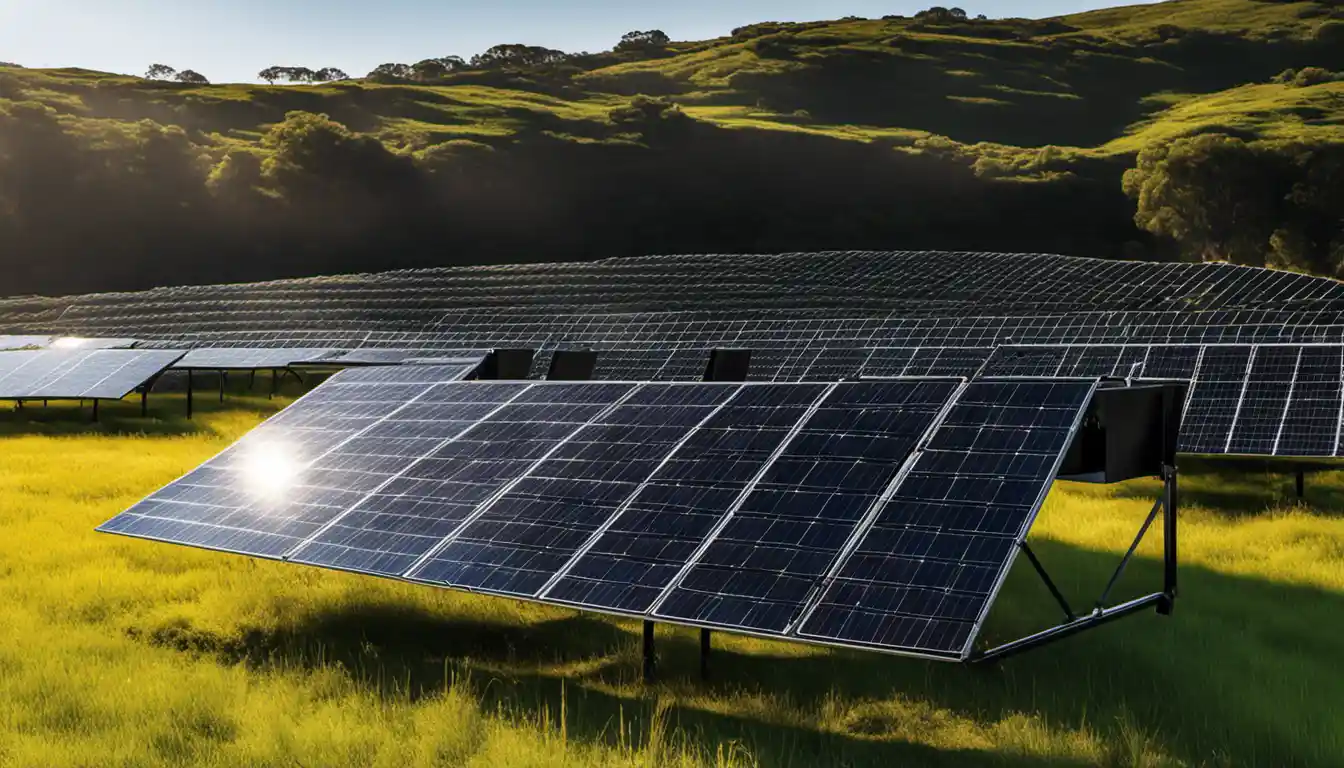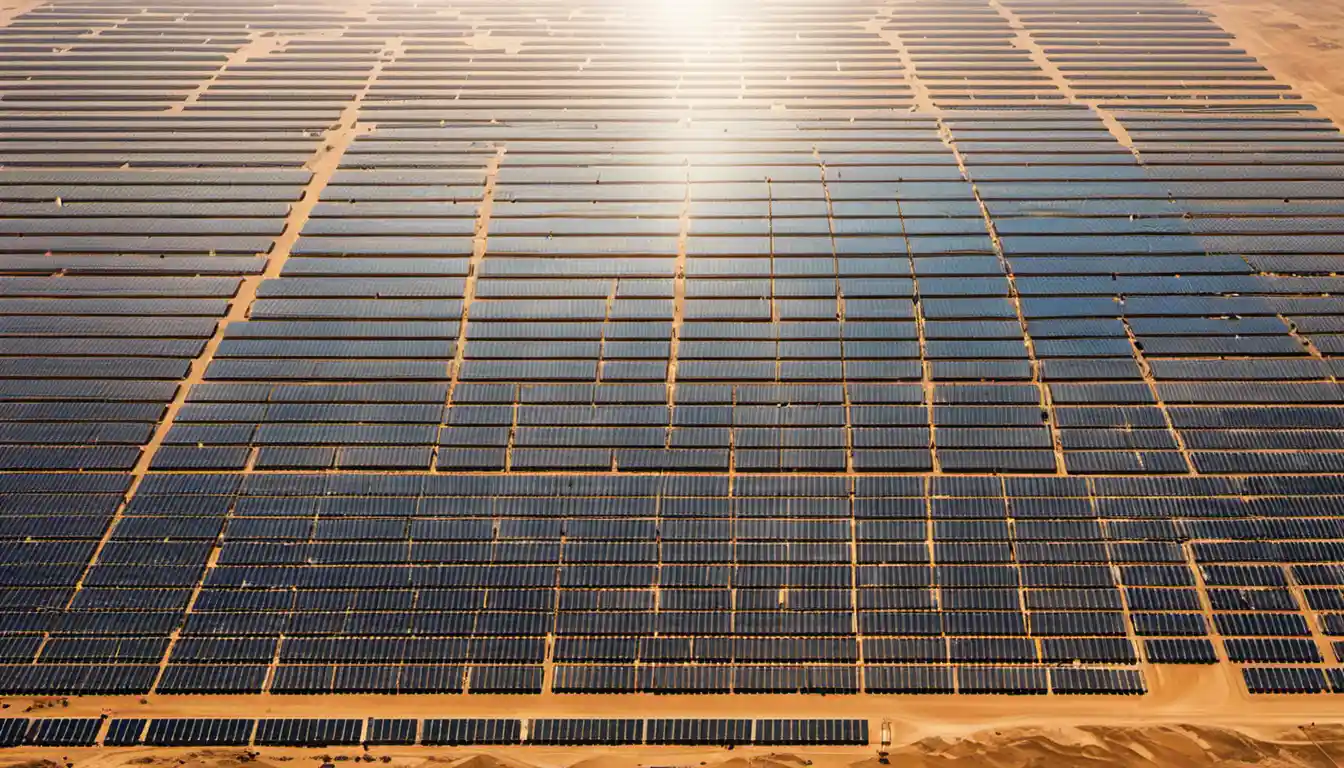Understanding Solar Panel Degradation
Solar panels degrade over time primarily due to weather-related damage; including temperature fluctuations, storms, and exposure to UV light which can cause physical deterioration of materials. Additionally, the production of electricity itself causes wear and tear, as the repeated process of energy conversion triggers mechanical stress. This slow degradation can result in reduced efficiency and energy output.
Defining Solar Panel Degradation
Solar panel degradation refers to the process that results in the decrease in the efficiency and power output of a solar panel over time. When I talk about efficiency, I mean the ability of the solar panel to convert sunlight into usable electricity. It’s much like how a new car runs perfectly at first, but with time and use, the performance begins to decline. Same is the case with solar panels, only their decline is much slower, and for very different reasons.
Importance of Solar Panel Degradation
Understand this, solar panels are not immortal. They degrade. And knowing why and how solar panels degrade is critical when considering a solar investment. Every year, as solar panels degrade, their power output reduces which limits the amount of electricity available for usage. Knowing the rate at which this happens lets you predict the long term performance and the return on investment.
Unveiling the Causes of Solar Panel Degradation
My two decades of career experience have allowed me to witness the degradation of several solar arrays firsthand. Let’s delve into some common causes, shall we?
Light-Induced Degradation
Believe it or not, sunlight itself can cause solar panels to degrade. This may seem counterproductive since sunlight is what powers the panels in the first place. This is what we refer to as Light-Induced Degradation (LID). It happens shortly after solar panels are exposed to sunlight for the first time.
Potential-Induced Degradation
Also known as PID, Potential Induced Degradation is a phenomenon that occurs due to the high voltages which the panels are exposed to during their functioning. These high voltages can lead to the leaking of the electrical current, causing efficiency losses.
Age-Related Degradation
Every solar panel has a lifespan, typically about 25-30 years. Age-related degradation comes into play as chemical, mechanical, and electrical processes within the panel begin to degrade over time, regardless of external factors.
Natural Factors Contributing to Degradation

Thermal Cycling
Thermal cycling refers to the daily heating and cooling that solar panels endure. Thermal stress can lead to physical damage, like cracks and delamination, reducing the solar panels’ efficiency.
Damp Heat
Constant exposure to humid conditions and heat can cause corrosion on the solar panel materials, leading to further degradation.
Humidity Freeze
Humidity freeze is a consequence of panels being exposed to freezing conditions after high humidity. This rapid freezing and thawing can impact the panel materials, causing them to degrade over time.
Ultraviolet (UV) Exposure
Prolonged UV exposure, similar to what the sun does to our skin or a piece of plastic left outside, can also degrade solar panels over time.
Analyzing The Degradation Rate of Solar Panels
Now that we understand why solar panels degrade, let’s dig further into how quickly this process happens. Aiding us in this journey will be something called a solar panel degradation curve.
Solar Panel Degradation Curve
The solar panel degradation curve is a graphical representation of the efficiency loss of a solar panel over its lifetime. It typically follows a linear trend, showing a gradual decrease in efficiency rather than a sudden decline.
Solar Panel Degradation Per Year
A well-manufactured solar panel will degrade at a rate of about 0.5-1.0% per year. This might not seem like much, but when it comes to the amount of electricity you are able to generate, every percentage point counts.
Do Solar Panels Degrade When Not in Use?

Interestingly, solar panels do not degrade significantly when not in use. However, they may still be subject to weather-related factors like wind, snow, and heat which can cause minor physical degradation.
Variables that Influence the Degradation Rate of Solar Panels
A variety of other factors can also impact how quickly a solar panel degrades.
Quality of the Solar Panel
The build quality and materials used in the solar panel can play a big role in the rate of degradation. High-quality panels with top-grade materials and stringent manufacturing practices tend to degrade slower.
Panel Assembly
How a solar panel is assembled can also influence its lifespan. If not properly mounted and secured, solar panels may degrade faster due to increased exposure to the elements, and physical stress.
Installation Process
Proper installation is key to maximizing the lifespan and efficiency of your solar panels. Improper installation can result in increased vulnerability to the elements and expedite degradation.
Maintenance Plan
Regular maintenance, which includes cleaning and inspections, can help lower the degradation rate of solar panels. Be sure to visit our guide on solar panels maintenance to know more about this topic.
Weather Conditions
Extreme weather conditions like hail, heavy snowfall, or high winds can cause physical damage to the panels, speeding up degradation.
Calculation of Solar Panel Degradation
Ever wondered how we come to terms with the concept of solar panel degradation? There’s some math involved, and it all boils down to the solar panel degradation calculation.
Understanding the Degradation Calculation

Solar panel degradation is often calculated by comparing the current power output to the original nameplate rating. The difference, expressed as a percentage, depicts the loss of efficiency.
Factors in the Calculation Process
Several factors are taken into account when calculating degradation such as the age of the panels, their operating conditions, and the quality of the panels.
How to Calculate Solar Panel Degradation
To calculate the degradation, you’ll need to know your solar panel’s original nameplate rating, and the current power output. The decrease in power output over time, expressed as a percentage of the nameplate rating, gives you the depreciation.
Extending the Life of Solar Panels
So, now that we know why solar panels degrade, how about we focus on ways we can extend their life?
Reducing Light-Induced Degradation
LID can be reduced by using better quality solar cells and adopting improved manufacturing processes.
Preventing Potential-Induced Degradation
PID can be combated by using high-quality materials and optimizing the electrical design of the solar panel systems.
Maximizing Solar Panel Life Through Proper Maintenance
Routinely cleaning and inspecting your solar panels can significantly extend their operational life. Check out our guide on solar panels maintenance for detailed steps on maintaining your solar system.
Weather Mitigation Techniques for Solar Panels
Preventative measures, such as installing solar panel covers or frames, can reduce damage from severe weather conditions, which in turn slows down the degradation.
Understanding why solar panels degrade and how to prevent or slow down this process can greatly benefit solar panel owners. Striking the right balance between quality, regular maintenance, and careful installation will help ensure that your solar panels generate power efficiently over their entire lifespan.



